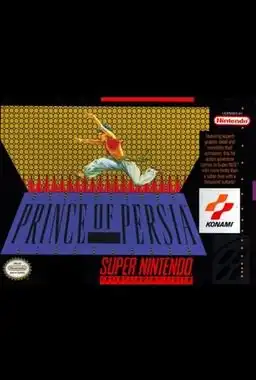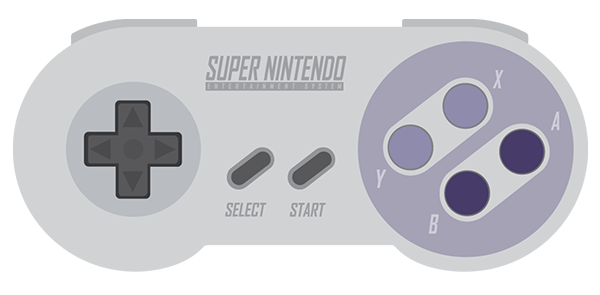Stepping back into the Sultan's palace dungeons via the Super Nintendo feels like visiting an old friend who hasn't gotten any easier to deal with. The Prince of Persia SNES port brought Jordan Mechner's groundbreaking cinematic platformer to Nintendo's 16-bit powerhouse, offering a unique blend of fluid animation, deadly traps, and frustratingly precise platforming that defined a genre. Was it the definitive version, or just another port in a crowded market? Let's dust off the old controller and find out.
A Timeless Tale of Daring and Danger
The premise is simple, yet effective: the evil Grand Vizier Jaffar has seized power while the Sultan is away. He's locked away the beautiful Princess and given her just two hours to decide – marry him or die. You, an unnamed adventurer smitten with the Princess, have been tossed into the deepest, darkest dungeon below the palace. Your goal? Escape the prison, navigate the perilous palace, confront Jaffar, and save the Princess before time runs out. It's a classic swashbuckler setup, straight out of an Arabian Nights tale, and it provides the perfect motivation for the grueling journey ahead.
More Than Just Jumping: The Gameplay Loop
Prince of Persia isn't your typical run-and-jump platformer. It's a "cinematic platformer," a term coined largely because of this very game. Movement is deliberate, weighty, and based on realistic (for the time) animation. You won't be bouncing off enemies' heads here.
The core gameplay involves:
- Precise Platforming: Navigating ledges, jumping over pits (often spiked!), climbing, and hanging on by your fingertips. Every step matters.
- Deadly Traps: Guillotines, pressure plates, retractable spikes, and crumbling floors await your misstep around every corner. Learning their timing is key.
- Sword Combat: Engaging in one-on-one duels with Jaffar's guards. Combat is a fencing match of parries, thrusts, and retreats, requiring patience and timing rather than button mashing.
- Environmental Puzzles: Finding hidden buttons to open gates, figuring out the correct path through a maze of traps, and occasionally dealing with magical elements like potions or your shadowy doppelganger.
The constant ticking clock adds immense pressure. Every death sends you back to the start of the level, but the timer doesn't reset. It's a brutal design choice that ramps up the tension significantly in later levels.
Those Controls!
Ah yes, the controls. This is often the first hurdle for new players and a point of contention even for veterans. The game's realistic animation, while visually impressive thanks to Jordan Mechner's pioneering use of rotoscoping (tracing live-action footage), translates to controls that feel heavy and require absolute precision.
Want to take a small step? Tap walk. Want to take a big leap? Hold run and jump. Want to grab a ledge? Make sure your jump is timed perfectly. Falling even a short distance can mean instant death. Sword fighting feels clunky at first, but mastering the parry and riposte system becomes incredibly satisfying. Overcoming the initial awkwardness of the controls is arguably the game's first, and perhaps biggest, challenge. But stick with it, and the deliberate movement starts to make sense within the game's world.
The Look and Sound
The Prince of Persia SNES version brought the game's distinctive visual style to Nintendo's console. The rotoscoped animation remains the star, giving the Prince and his foes a fluidity of movement rarely seen in games at the time. Watching the Prince climb, hang, and fight is still impressive.
Environments, while detailed, can become a bit repetitive visually, especially in the early dungeon levels. However, later stages introduce more variety. The music features atmospheric tracks with a clear Persian influence, adding to the exotic setting. Sound effects are functional but perhaps less memorable than the visuals and music.
SNES vs. The Original PC: Which is Better?
Comparing the Prince of Persia SNES to the original DOS/Apple II versions is tricky. The core game is the same. The SNES version benefits from the console's color palette and sound capabilities, potentially offering a slightly more polished presentation than some early PC ports. Some argue the SNES version has slightly more forgiving controls or hit detection in places, while others find it just as brutal. Ultimately, the choice often comes down to nostalgia and the platform you first experienced it on. Both offer the same iconic, challenging experience.
Still Worth Playing Today?
Absolutely! The Prince of Persia SNES is more than just a historical curiosity; it's a genuinely engaging and rewarding game, if you have the patience for its deliberate pace and high difficulty. It's a fantastic example of early cinematic platforming and the power of unique animation.
While finding original SNES hardware might be a quest in itself, the game is readily available through emulation or sometimes included in modern retro collections or digital storefronts (like the Prince of Persia Classic remake, which updates the visuals but keeps the original levels). Experiencing the original game, however you play it, gives you a real appreciation for the roots of many modern action-adventure games.
FAQ
Q: Is Prince of Persia SNES very difficult? A: Yes, it's known for being quite challenging due to precise platforming, instant-death traps, and a strict time limit that doesn't reset upon death.
Q: How long does it take to beat Prince of Persia SNES? A: The in-game timer is 60 minutes (originally 120 in some ports), but actually beating the game will likely take much longer as you learn levels through trial and error and frequent deaths.
Q: What is rotoscoping in Prince of Persia? A: Rotoscoping is an animation technique where animators trace over live-action footage frame by frame. Jordan Mechner used this method with his brother's movements to create the incredibly fluid and realistic character animations in the game.
Q: Is the SNES version different from the PC version? A: The core game, levels, and story are the same. Differences are primarily in graphics, sound, and potentially minor tweaks to controls or hit detection depending on the specific port comparison.
The Prince of Persia SNES remains a classic for a reason. It demanded patience, precision, and perseverance, and rewarded players with a truly unique adventure. It's a tough nut to crack, but mastering those controls and finally reaching Jaffar within the time limit provides a sense of accomplishment that few games can match. If you're a retro gamer looking for a real challenge with timeless style, the SNES version is well worth revisiting. Just... watch out for those spikes.


